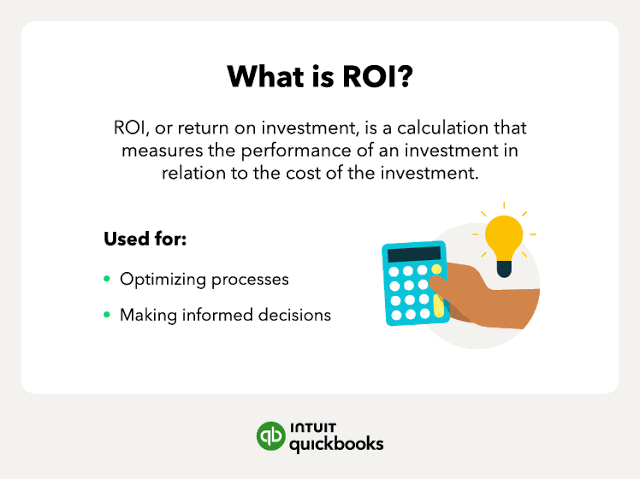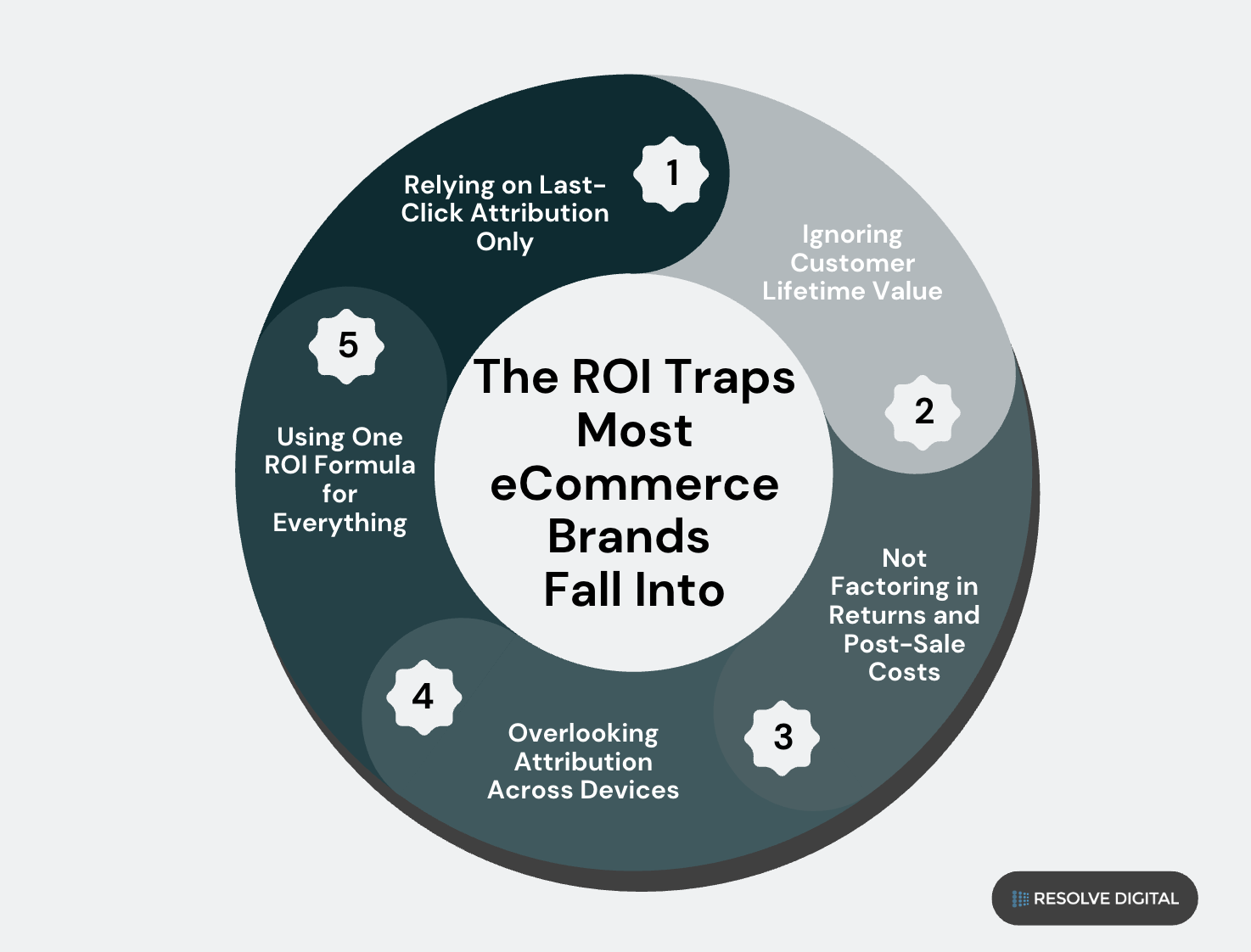Expert insights into high-end brand management for luxury retail sites, focusing on consistency, elegance, and impact.
eCommerce
Struggling with ROI clarity in your eCommerce brand? Avoid these common mistakes that skew your numbers and lead to poor decision-making.
%2018.55.05.png)
Tracking ROI in eCommerce isn’t new but when it comes to luxury, the rules shift entirely. You’re selling aspiration, exclusivity, and a carefully curated experience. Which means your return on investment can’t be measured by generic templates or surface-level analytics. High-value customers interact differently, convert slower, and expect more. So, if you’re using the same ROI tactics built for mass-market eCommerce, you’re likely leaving money, and insight, on the table. In this guide, we’ll walk you through how to measure ROI correctly for luxury eCommerce, so every campaign, channel, and customer segment tells the real story behind your profitability.
In the luxury eCommerce worlwe’ll walk you through how to measure ROI correctly for luxury eCommerced, precision is everything. When you're selling high-ticket items to a selective audience, every dollar spent and earned carries more weight. A vague understanding of ROI might work for mass-market brands, but in luxury, guesswork can lead to costly blind spots. You need to know exactly which marketing channel brought in that $3,000 handbag sale or which user journey led to a $10,000 cart checkout. Granular data helps you identify your top-performing customer segments, refine your messaging, and double down on what works, without wasting a cent on what doesn’t. Precision lets you scale luxury smartly, not just loudly.

Luxury eCommerce brands can’t afford to rely on basic ROI formulas like (Revenue – Cost) / Cost. That’s too shallow. To measure ROI accurately in this space, your formula needs to account for Customer Acquisition Cost (CAC), Customer Lifetime Value (CLV), Average Order Value (AOV), and Return Rate. Luxury shoppers behave differently. Some buy once at high price points, others return frequently for exclusivity. A better approach is to track segmented ROI. For example, measure ROI from repeat customers separately from first-timers. This gives you deeper insight into which customer type drives real profitability.
Luxury purchases usually don’t happen after just one click. A customer might see your brand on Instagram, research it through Google, then finally convert through email. If you're using last-click attribution, you're missing 80% of the story. Use multi-touch attribution models like linear or time-decay attribution to understand the full buyer journey. Platforms like Google Analytics 4 and Triple Whale can help map out these paths clearly. This way, you’re not over-crediting a single touchpoint and underfunding the ones that actually do the heavy lifting in luxury conversions.
In luxury eCommerce, micro-behaviors are gold. A customer bookmarking a product, viewing a lookbook, or subscribing to exclusive drops are all actions that contribute to eventual ROI. If you’re only tracking final sales, you're leaving rich behavioral data on the table. Set up event tracking on your site to monitor these micro-conversions. Use tools like Hotjar or Mixpanel to identify what actions commonly lead to big-ticket purchases. It’s not about vanity metrics. It’s about tracking the exact digital footprints that build trust and lead to conversion in the high-end shopping journey.
Don’t lump everything together. If your organic content like blog posts, PR coverage, or SEO-optimized landing pages is generating consistent revenue, it deserves its own ROI stream. Paid media might bring faster results, but long-term ROI often belongs to organic. Break your metrics apart. Compare the ROI of your Meta ads versus that six-month SEO effort. Use UTM parameters and CRM integrations to keep everything trackable. In the luxury space, organic channels often carry more trust and influence, so this separation tells you what’s really delivering long-term brand equity.
This is where most luxury eCommerce brands slip. A returned item doesn’t just impact your revenue. It affects inventory planning, shipping costs, restocking labor, and customer satisfaction. If you’re measuring ROI without subtracting the impact of returns and post-sale service costs like white-glove delivery or gift wrapping, your numbers are bloated. Include Return Rate and Net Promoter Score (NPS) in your ROI calculations. High NPS and low returns often point to sustainable profitability in luxury. It’s not just about the sale. It’s about how it ends, too.
Not all luxury customers are created equal. Some drive higher profits over time, others are seasonal splurgers. Break your ROI down by customer cohorts, product category, or even geography. You’ll likely find that your handbags outperform your footwear, or that European customers convert higher with lower returns. Use tools like Shopify Plus with ProfitWell or Daasity to slice your data for these insights. Measuring ROI without segmentation is like driving with sunglasses at night. You’re seeing numbers, but not clearly enough to make bold, smart decisions.
Luxury eCommerce is about long-term brand perception and exclusivity. Traditional ROI formulas ignore this, but in luxury, brand equity directly impacts future sales. Are your campaigns increasing branded search volume? Are more customers engaging with your lookbooks, not just your product pages? Tools like Brandwatch and Google Trends can help measure brand lift and sentiment. These metrics might not tie back to immediate revenue, but they tell you if your brand is becoming more desirable over time. And in luxury, desire is currency.
Not all ad spend is created equal, especially in luxury. A retargeting campaign for a sold-out item won’t bring ROI, no matter how optimized it is. Instead of looking at ROI just by channel like Instagram or Google, break it down by campaign type such as product launches, gift guides, VIP exclusives, brand storytelling. You’ll start to see which narrative style actually converts. This level of tracking shows you whether emotional storytelling or scarcity-driven campaigns yield better returns. That’s the kind of data that shapes smarter, more luxurious strategies.

Measuring ROI sounds straightforward such as spend money, make money, do the math. But in reality, most eCommerce brands, especially in the luxury space, make missteps that leave them with incomplete or inflated numbers. These mistakes blur performance insights and lead to the wrong decisions, wasted budget, and missed opportunities. Here are the most common ROI slip-ups brands make when trying to track it all themselves.
One of the most common mistakes is defaulting to last-click attribution. It’s easy, it’s familiar, but it’s misleading. Luxury shoppers rarely convert on the first touchpoint. They research, engage, compare, and revisit. If you're only giving credit to the final click, you’re ignoring all the brand-building that happened before. That influencer post, that high-impact PR feature, or that beautifully designed email; all of it gets erased. And when those touchpoints go unrecognized, your budget starts leaning in the wrong direction.
Many brands focus solely on the immediate sale and forget to calculate Customer Lifetime Value (CLV). In luxury eCommerce, a first-time shopper might become a repeat buyer who sticks around for years. When you only measure ROI based on single transactions, you undervalue your real revenue potential and overreact to acquisition costs. CLV should be built into your ROI model from day one; it’s what separates sustainable growth from short-term wins.
Luxury returns can be expensive. Between shipping, restocking, customer service, and loss of inventory value, a returned item chips away at your actual return on investment. Yet, many brands calculate ROI based on gross sales, not net sales after returns. Add in white-glove delivery services, custom packaging, or loyalty perks, and suddenly your “profitable” campaign starts looking a lot less shiny. If you’re not deducting these costs from your ROI, your numbers are painting the wrong picture.
Today’s customer might browse your store on mobile, read your email on desktop, and finally check out on a tablet. If you’re not using tools that track cross-device behavior, you’re likely misattributing sales or missing them entirely. This is especially common in luxury, where decision-making takes longer and shopping journeys are multi-session. Without proper tracking in place, your analytics will tell a fragmented story and you’ll end up optimizing for the wrong user path.
ROI isn’t one-size-fits-all. Different campaigns, customer types, and product categories deserve different measurement approaches. For example, a brand awareness campaign won’t yield the same ROI as a limited-time product launch. Still, many eCommerce brands lump all efforts under a single ROI metric, which distorts actual performance. If you don’t break it down by campaign type or customer segment, you’ll never really know what’s driving your profits and what’s just coasting.
Resolve Digital, in luxury eCommerce, prioritizes smart data, sharp strategy, and ROI that actually reflects the value of your brand. We've helped premium eCommerce businesses dig deeper into their analytics, refine their customer journeys, and build measurement frameworks that go beyond clicks and conversions. If you're ready to measure what truly matters and scale with intention, we're here to help. Contact us and let’s talk about what ROI should really look like for your brand on a complimentary discovery call!
The right partnership can help you elevate your online presence and grow your business by attracting your dream customers. Whether you're looking to develop a luxury eCommerce store from scratch, improve your existing site, or migrate to a different platform, Resolve Digital can help you succeed. Get in touch to learn more about our end-to-end eCommerce services!